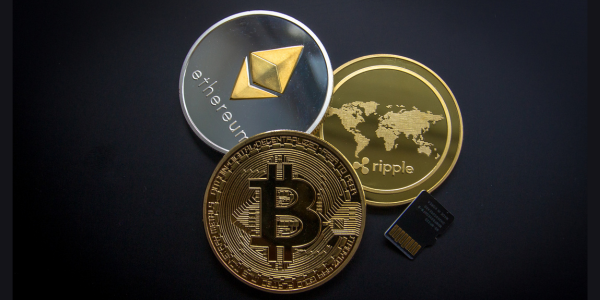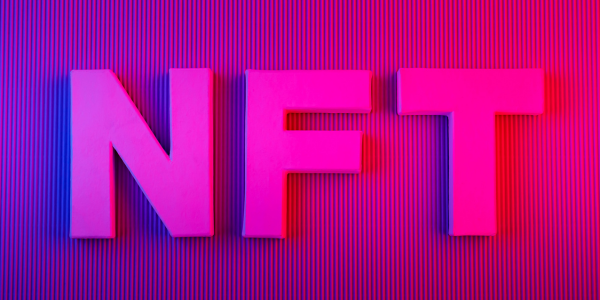In the current world of digital assets, which is a safer investment between fungible vs non-fungible tokens?
Fungible tokens — uniform in value — have long dominated the crypto space. Yet, the rise of non-fungible tokens — each unique and irreplaceable — is revolutionizing the idea of digital ownership.
Learn the definitions and the biggest differences between the two, as well as what semi-fungible tokens are.
What Is a Fungible Token?

Fungible tokens are interchangeable digital assets, identical in terms of value, attributes, and properties. In other words, its holders can exchange one unit for another since they have the same value.
Due to their wide acceptance and ease of trading, these types of tokens have high liquidity. Moreover, they can be divided into smaller units since each unit is identical.
People can use these tokens for various purposes, from transactions and automation of smart contracts to crowdfunding and value storage. They can also be used as an in-game currency.
Fungible tokens use Ethereum Request for Comment or ERC-20. This standard lets people create things they can transfer, like access, ownership, and cryptocurrencies.
In short, what characterizes fungible tokens is their interchangeability, divisibility, uniformity, liquidity, and frequent use. These features make them suitable for crypto investments and crypto transactions.
Examples of Fungible Tokens
The best examples of fungible tokens are cryptocurrencies, such as Bitcoin, Ethereum, and Dogecoin. For instance, there is no difference between two bitcoins. One is equal to another. Both are part of an identical blockchain, both execute the same tasks, and both can be exchanged or traded since they have the same value.
What Is a Non-Fungible Token?
The meaning of non–fungible is unique, irreplaceable. While each fungible currency has the same value, each NFT is unique — they cannot be exchanged with each other. NFTs are traded per market factors, such as their rarity, potential, and inherent value.
These types of tokens are created through a public blockchain and smart contracts. Smart contracts will grant their holders control over their portability. Each NTF unit has a unique ID and ownership information that will distinguish it from other NFTs.
Non-fungible assets can be used as digital art, domain names, collectibles, and in-game assets. In games, they can represent an avatar, a weapon, or a land. Likewise, players can earn money by trading them. NFTs’ value will depend on their supply and demand, meaning their prices may vary.
To conclude, NTFs are unique crypto assets that cannot be replicated or burned. Each token is unique and its value will depend on its scarcity. They can also be traded and traced. This means that their authenticity doesn’t have to be confirmed by third parties.
Examples of Non-Fungible Tokens
The most popular example of NTFs is the Nyan Cat gif, which sold as an NTF for 300 ETH.
Snoop Dogg’s projects are also well-known in the sphere. His NTFs can be used within The Sandbox metaverse.
Sandbox members can buy digital land neighboring his property, view his art collection, or buy tickets for in-game events.
One other popular crypto game is Decentraland, a gaming platform that uses LAND NFTs as a means of buying metaverse real estate.
Difference Between Fungible and Non-Fungible Tokens
Now that you understand the different definition of non-fungible vs fungible tokens, here are the key differences between these two types of tokens.
| Type of Token | Fungible | Non-Fungible |
| Interchangeability | Yes | No |
| Divisibility | Yes | No |
| Use Case | Payment method | Trading |
| Token Standards | ERC-20 | ERC-721 |
Interchangeability
Fungible crypto assets are interchangeable with each other, while non-fungible tokens are not. Each NFT is unique and cannot be replicated, while this is not the case with FTs as they are identical. NFTs only have one ID blockchain address that indicates their scarcity and owner.
Divisibility
FTs can be divided into smaller units suitable for transactions. For example, bitcoin is divided into satoshis, Ethereum into wei, and Litecoin to litoshi. On the other hand, NFTs are not divisible.
Use Cases
FTs are used as a payment method, while NTFs necessarily have a monetary use. Namely, since they come in different forms, like digital art, in-game assets, and collectibles, they are usually used for trading. That said, they can also be used as currencies, loyalty points, and a means of exchange within dApps.
Token Standards
FTs use ERC-20 standards, while NFTs use ERC-721 standards. The components of the ERC-20 standard include balance of total supply, transfer, and allowance. Components of the ERC-721 standard include token ID, metadata, contract interface, and functions.
What Are Semi-fungible Tokens?
Semi-fungible tokens, or SFTs, are a combination of fungible money and non-fungible assets. They use the ERC-1155 standard, which allows them to be exchanged with identical tokens. In this segment, SFTs act as FTs. However, after losing their trade value, SFTs become NTFs. SFTs also enable reversible transactions.
They use smart contracts that include both FTs and NFTs to reduce transfer costs, as well as for multi-transfer options.
SFTs are mainly used in games since they allow their holders to buy and sell more than one asset within a single transaction. These token types are also used to record game history. Furthermore, SFTs can function as redeemable tokens that will be transformed into collectible NTFs after purchase.
They can also represent rare collectibles, like stamps, comic books, or trading cards, event tickets, and loyalty points.
Examples of Semi-fungible Tokens
As mentioned above, STFs are often used in the gaming world. They represent unique digital assets, such as swords, armor, or skins. Players can own, buy, sell, or collect these digital items.
For example, Sandbox allows its users to use SFTs to create more than one item that they can later trade with other players.
STFs can also come in the form of loyalty points. For example, one token can represent one loyalty point.
Conclusion
The main NFT vs token difference can be seen in their interchangeability, divisibility, use cases, and value. FTs are identical, they can be shared and exchanged with each other, while NTFs are unique in their nature. This means that they cannot be exchanged with each other and that they are indivisible.
Furthermore, FTs are used for crypto investments and transactions, while NFTs can come in the form of digital art, collectibles, or game assets.
Semi-fungible tokens are an alternative to FTs and NFTs. SFTs have the characteristics of both tokens, although they are built on a different standard.
